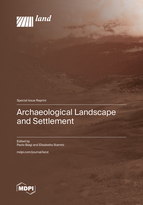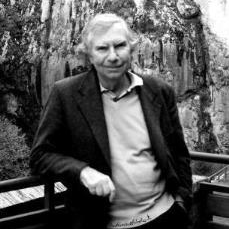Archaeological Landscape and Settlement
A special issue of Land (ISSN 2073-445X). This special issue belongs to the section "Landscape Archaeology".
Deadline for manuscript submissions: closed (8 January 2023) | Viewed by 37182
Special Issue Editors
Interests: landscape archaeology; prehistoric archaeology; shell middens; Indus Valley; high-altitude archaeology; lithic mining; hunter-gatherers; early farmers
Special Issues, Collections and Topics in MDPI journals
Interests: landscape archaeology; prehistoric archaeology; neolithization of Europe; raw material procurement and use; archaeometry of ceramics and stone artefacts; prehistory of the Indus Valley
Special Issues, Collections and Topics in MDPI journals
Special Issue Information
Dear Colleagues,
The goal of this Special Issue is to set up a series of papers regarding different approaches to landscape archaeology, independent of the geographic location and chronology of the sites involved. It is well known that human impacts have had dramatic effects on landscapes, which can be interpreted thanks to well-defined archaeological methods. In most cases, environmental changes were caused by activities carried out by groups of human beings due to subsistence economy reasons, in other cases to acquire different types of raw materials, among which are knappable stones and metals. Other landscape changes are often consequent to complex economic and trade activities. Environmental changes due to climate variations led people move to territories that were more suitable for settling. Moreover, the coastal changes consequent to global sea-level rise which took place at the end of the Pleistocene led to the submersion of wide regions, most of which are now lost to archaeology, or their investigation is very technically difficult. The improvement of radiocarbon dating techniques in recent decades has played an important role in the chronological definition of the periods during which different cultural aspects developed, weakened, and later disappeared. Another important topic regards the exploitation of highland zones. When and why did people start to explore extreme mountain environments? What kinds of activities did they practice there? These are some of the topics this Special Issue on Landscape and Settlement is expected to investigate.
Prof. Dr. Paolo Biagi
Dr. Elisabetta Starnini
Guest Editors
Manuscript Submission Information
Manuscripts should be submitted online at www.mdpi.com by registering and logging in to this website. Once you are registered, click here to go to the submission form. Manuscripts can be submitted until the deadline. All submissions that pass pre-check are peer-reviewed. Accepted papers will be published continuously in the journal (as soon as accepted) and will be listed together on the special issue website. Research articles, review articles as well as short communications are invited. For planned papers, a title and short abstract (about 100 words) can be sent to the Editorial Office for announcement on this website.
Submitted manuscripts should not have been published previously, nor be under consideration for publication elsewhere (except conference proceedings papers). All manuscripts are thoroughly refereed through a single-blind peer-review process. A guide for authors and other relevant information for submission of manuscripts is available on the Instructions for Authors page. Land is an international peer-reviewed open access monthly journal published by MDPI.
Please visit the Instructions for Authors page before submitting a manuscript. The Article Processing Charge (APC) for publication in this open access journal is 2600 CHF (Swiss Francs). Submitted papers should be well formatted and use good English. Authors may use MDPI's English editing service prior to publication or during author revisions.
Keywords
- human impact on the landscape
- coastal changes and sea-level rise
- settlement patterns and sites complementarity
- radiocarbon dating
- the exploitation of the highland zones
- mining raw material sources
- stone and metal
Related Special Issue
- Archaeological Landscape and Settlement II in Land (3 articles)







